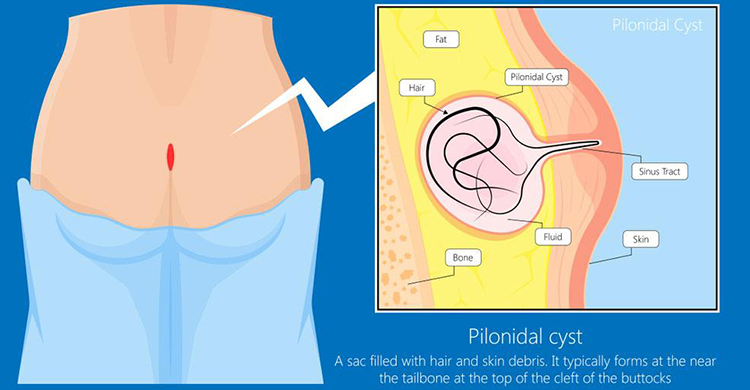
A pilonidal sinus (PNS) is a tiny skin hole or tunnel. It might swell up with liquid or pus, leading to the development of a cyst or abscess. The buttocks' upper cleft is where it develops. Hair, grit, and debris are frequently seen in pilonidal cysts. It may be quite painful and frequently becomes infected. It could leak pus and blood and have a bad stench if infected.
PNS's specific etiology is unknown; however, it is thought to be a mix of altering hormones (since it develops after puberty), hair growth, friction from clothing, and prolonged sitting. Sitting might force the hair developing in the region to re-enter the skin by creating friction.
Similar to how it would respond to a splinter, the body responds to this hair as alien and mounts an immunological attack. Your hair cyst is a result of this immunological reaction. A person may occasionally have several connected sinuses under their skin.
Infection warning symptoms include:
By regularly cleaning the affected region with mild soap, ensuring all soap is gone, keeping the area fully dry, and avoiding prolonged sitting, you can stop PNS from occurring again.
Treatment for a PNS will depend on the factors:
Lancing:
By performing this surgery, an abscess, or a buildup of pus inside the sinus, is relieved of its symptoms. Your doctor will administer a local anesthetic before this treatment. The abscess will subsequently be opened using a knife. Any hair, blood, or pus found inside the abscess will be cleaned away.
Your doctor will advise surgery if you experience recurrent PNS or have more than one sinus tract. A local anesthetic will initially be administered to you. Once the pus and debris have been removed, the surgeon will open the lesions. The physician will heal the incisions with stitches when this procedure is finished. Your surgeon will review how to change the bandages after surgery and advise shaving the area to stop hair from growing into the wound.